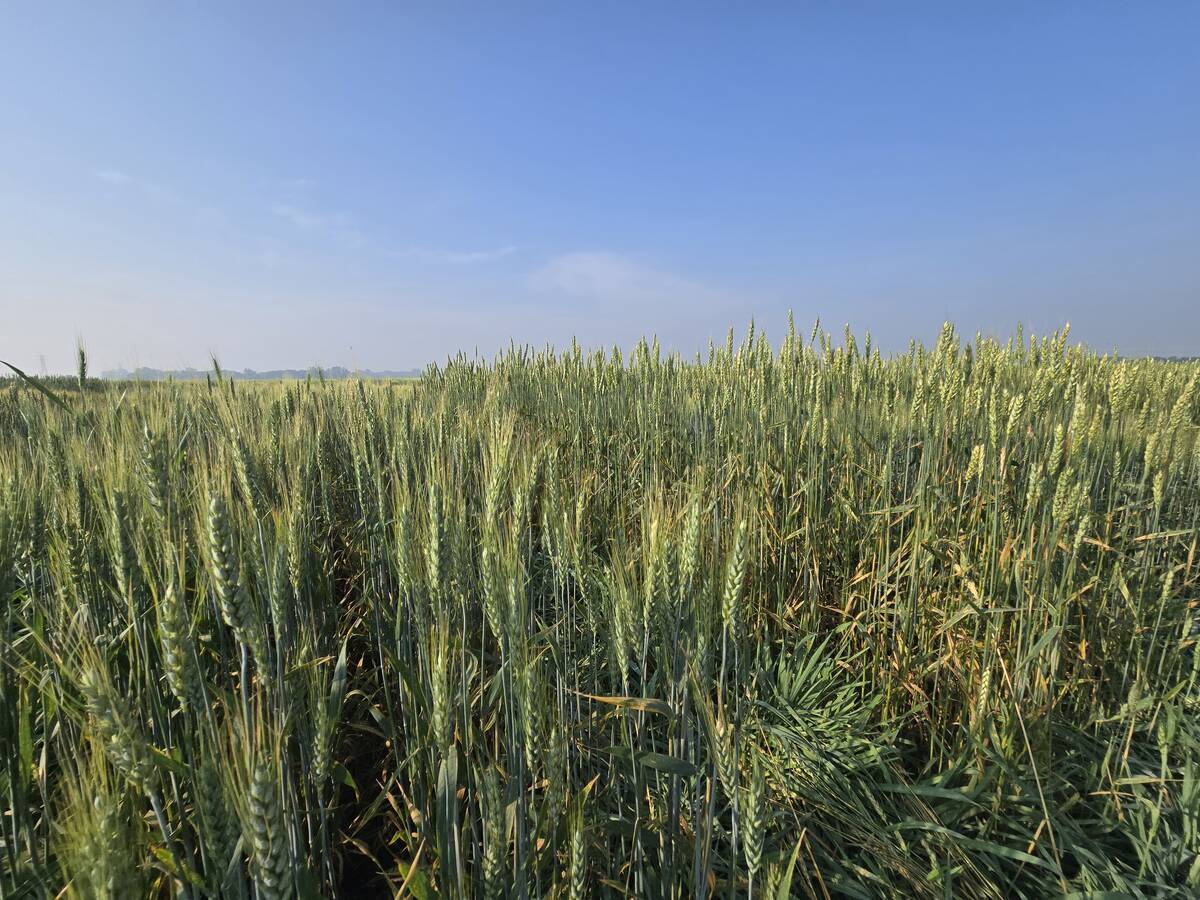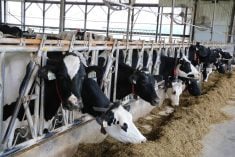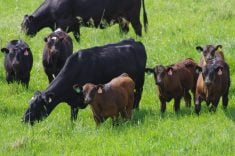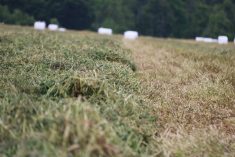Manitoba hay growers are debating what they should charge for bales this year, given plentiful forage but difficult harvest conditions.
“We’ve got a fairly good crop of hay out there, as far as the number of tonnes or bales, but the other thing that we’re seeing is that there is a lot of hay that doesn’t have the quality that we would normally hope to have,” said John McGregor, with Manitoba Forage and Grassland Association (MFGA) extension.
Current hay ads are testing the market but uncertainty over the quality of this year’s crop is making that market more complicated.
Read Also

Canada’s agricultural innovation in crisis?
Experts argue that Canada’s ability to foster agricultural innovation and technology needs drastic improvement, and it needs to happen now
While above-average yields have generally been reported, trying to harvest dry material has been a serious headache this summer. Rain-free windows were few. Areas near Brandon and Carman saw 26 days of rain out of the 62 between June 10 and Aug. 22, according to the MFGA, and only about five periods when producers had four consecutive good days for harvest.
“As we get into August, there were some windows that were longer out west than there were on the east side of the province or in the central side of the province… Looking at the ads, there’s lots of hay for sale. There’s not many saying, ‘without rain’,” McGregor said.
In a late July interview with the Co-operator, Manitoba Beef Producers also noted heavy forage volume led to slow swath drying.
A significant portion of that plentiful forage became overly mature hay or had potential nutrient loss from rain, according to McGregor. An August MFGA market report noted that both alfalfa and horse hay listings had discounts for low quality hay.
The report still put alfalfa prices between eight and 12 cents a pound, “the 12 being no rain, good quality, the eight being some rain on it and maybe and/or a little on the mature side,” McGregor said.
He further estimated that about 60 per cent of alfalfa ads were on the lower end of the range.
Dairy quality hay slid to 12 cents. Other hay slid further, compared to earlier this year, with good quality alfalfa-grass going for six to 7.5 cents and beef quality posted at five to six cents a pound.
Given greater available volume, however, McGregor said the price for good quality mix was still fairly high for sellers.
August is typically an exploratory month in terms of pricing, he added. Prices often rise or fall in September and October depending on how much silage and greenfeed is available, how open the fall grazing season is and what can be taken off as second cut.
Raised profit bar
Opportunity cost is part of sellers’ mental equation this year. Manitoba’s hay market is coming off a stratospheric peak in 2021, when drought led to acute feed shortages throughout the province and most of Western Canada.
High prices carried into 2022 when a late spring and several early snowstorms had cattle producers scraping for pre-turnout feed.
In March, alfalfa was still going for 11 to 12 cents a pound and dairy quality hay rose to 16 cents, according to the MFGA. Good quality alfalfa-grass was getting 10 to 14 cents a pound, and even beef quality mixes hovered between eight and 12.5 cents.
When it came to profit, however, the competition between crop options was fierce. Sky-high hay prices were joined in 2021 by a surging commodity market.
However, 2022 has proven to be a much friendlier year for forage, theoretically pushing prices down as demand for overwinter feed eases and supply recovers.
“Last year, we had some very good prices. This year, now we’re into a sort of buyer’s market where there’s enough hay out there that the guys are saying, ‘if I’m pricing it to sell, in some cases I’m not even meeting my cost,’” McGregor said.
High grain prices may have shifted the profitability equation in farmers’ minds, affecting how low they set their hay price before the disparity between what they could have made from grain on those acres becomes too significant.
McGregor urged producers to get a handle on their actual costs when weighing the cost-benefit threshold. Spreadsheets are available through Manitoba Agriculture to help with that.
“Again, if the buyer has lots of opportunity in other places or can get by with lower quality rather than high quality hay, we’re going to be in the same situation we’ve seen in the hay market in the past, where you are basically a price taker,” he said.
Factors further afield are also complicating the market. While drought has eased in Manitoba, it is still very much in play in parts of the U.S. Midwest, Montana and farther south and west. Demand from those areas has buoyed prices for hay exporters.
Manitoba producers may be chasing those better markets, given cooling demand closer to home, the MFGA suggested.
As for prices, growers who export will know their markets, McGregor noted.
“They’ll take the price that the buyers will pay,” he said. “They don’t want to sit on it too long. If we’re looking at the guys that have the option of growing alfalfa or growing wheat next year, that may determine their decision, if they know what their costs are for their hay and what the market will pay them this year.”
















